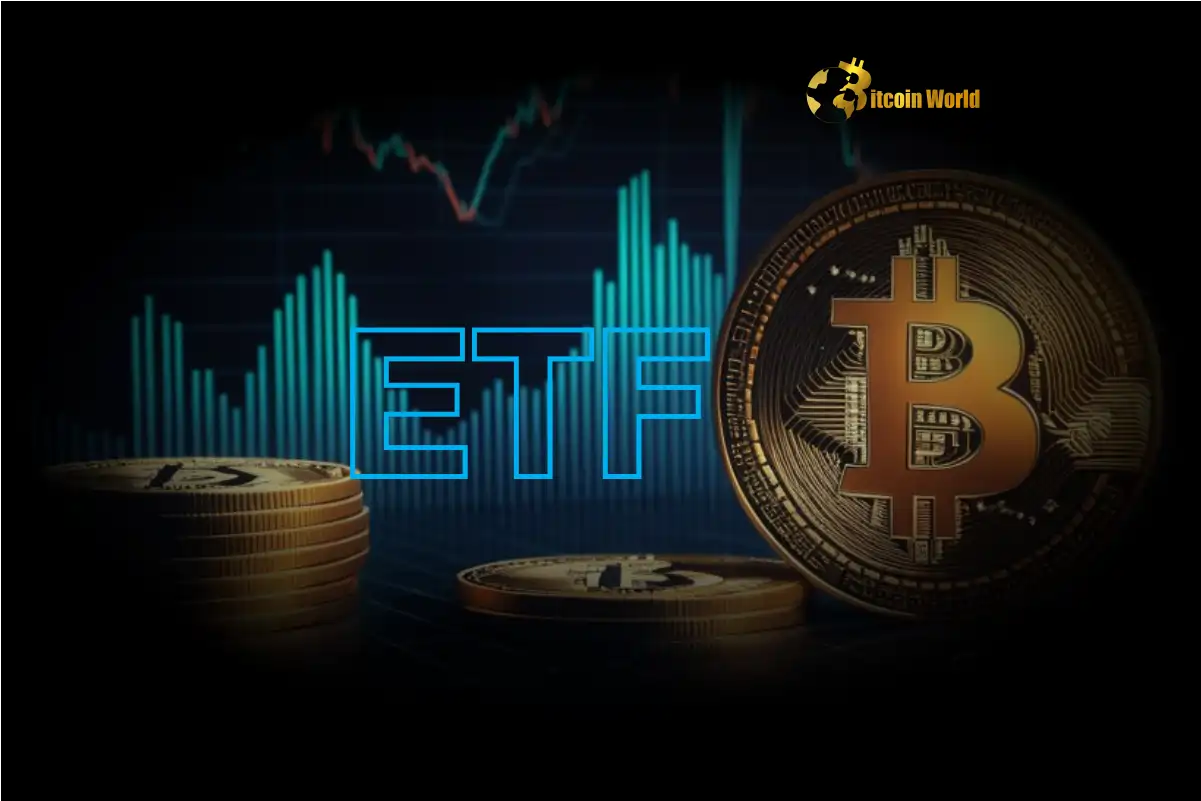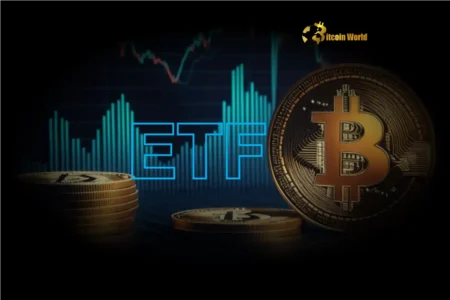
Just when the crypto market seemed to be finding its stride, a shocking reversal hit the U.S. spot Bitcoin ETF landscape. After a brief spell of inflows, April 3rd witnessed a significant net outflow of $99.84 million from these highly anticipated investment vehicles. What does this mean for Bitcoin and the broader crypto market? Let’s dive into the details and unpack what’s happening.
What Triggered the Bitcoin ETF Outflow?
According to crypto data tracker Trader T (@thepfund) on X, April 3rd marked a day of substantial movement in the U.S. spot Bitcoin ETF market, but not in the direction many hoped for. After a day of net inflows, the tide turned, resulting in a combined net outflow of $99.84 million across various funds. This sudden shift raises questions about investor sentiment and the short-term trajectory of Bitcoin. Was this a minor blip, or the start of a more concerning trend?
To understand the full picture, let’s break down the performance of individual ETFs:
| ETF Provider | ETF Ticker | Net Flow (USD Million) |
|---|---|---|
| BlackRock | IBIT | +65.27 |
| Grayscale | GBTC | -60.20 |
| Bitwise | BITB | -44.19 |
| Fidelity | FBTC | -23.27 |
| ARK Invest | ARKB | -20.05 |
| VanEck | HODL | -12.18 |
| WisdomTree | BTCW | -5.22 |
| Remaining ETFs | – | No Change |
As the table clearly illustrates, while BlackRock’s IBIT enjoyed a healthy inflow of $65.27 million, it was overshadowed by significant outflows from several other ETFs. Grayscale’s GBTC led the pack with a $60.20 million outflow, followed by Bitwise’s BITB, Fidelity’s FBTC, and ARK Invest’s ARKB. This mixed performance highlights the nuanced dynamics within the current Bitcoin ETF market.
Spot Bitcoin ETFs: What Are They and Why Do Outflows Matter?
For those new to the crypto space, Spot Bitcoin ETFs are investment funds that hold actual Bitcoin and allow investors to gain exposure to Bitcoin’s price movements without directly owning the cryptocurrency. These ETFs are traded on traditional stock exchanges, making Bitcoin accessible to a broader range of investors, including institutional players and retail investors who prefer regulated investment products.
The significance of inflows and outflows from these ETFs cannot be overstated. They serve as a crucial indicator of institutional and, to some extent, retail investor sentiment towards Bitcoin. Large inflows generally suggest growing confidence and demand, often seen as a bullish signal for Bitcoin’s price. Conversely, significant outflows, like the one observed on April 3rd, can indicate waning interest or profit-taking, potentially exerting downward pressure on Bitcoin’s price. Therefore, monitoring Spot Bitcoin ETFs flows is essential for understanding market dynamics.
Analyzing the US Bitcoin ETFs Performance: Beyond the Headline
While the headline figure of a $99.84 million net outflow from US Bitcoin ETFs is concerning, a deeper analysis reveals a more complex picture. Noticeably, BlackRock’s IBIT ETF bucked the trend, attracting substantial inflows. This suggests that investor preferences might be shifting towards specific ETF providers, potentially due to factors like brand reputation, lower fees, or perceived security.
However, the substantial outflow from Grayscale’s GBTC is a recurring theme. GBTC’s structure as a trust, converted into an ETF, differs from the newly launched spot Bitcoin ETFs. It carries higher fees and has been facing consistent outflows since its conversion. This persistent Grayscale GBTC outflow is likely attributable to investors rotating out of GBTC into lower-fee, newly established ETFs or directly into Bitcoin itself.
Here are some key points to consider regarding the performance of US Bitcoin ETFs:
- BlackRock’s IBIT Resilience: IBIT’s continued inflows suggest strong investor confidence in BlackRock’s offering and brand.
- GBTC Outflow Pressure: The ongoing outflows from GBTC are likely a combination of profit-taking and a shift towards more competitive ETFs.
- Broad Outflow Concern: While IBIT saw inflows, the net negative flow across multiple ETFs indicates a potential cooling in overall ETF demand, at least temporarily.
- Market Volatility: These flows can be highly sensitive to broader market conditions and Bitcoin price volatility. Short-term fluctuations are expected.
Why the Sudden Bitcoin ETF Outflow? Potential Factors
Several factors could be contributing to this recent Bitcoin ETF outflow. It’s important to remember that market movements are often influenced by a combination of elements:
- Profit-Taking: After a period of price appreciation for Bitcoin, some investors might be taking profits, leading to ETF outflows.
- Market Correction: The broader crypto market, and even traditional markets, can experience corrections. Such periods can trigger risk-off sentiment, prompting investors to reduce exposure to volatile assets like Bitcoin.
- Alternative Investments: Investors might be reallocating capital to other asset classes or investment opportunities perceived as more attractive in the short term.
- Macroeconomic Factors: Changes in interest rates, inflation data, or geopolitical events can influence investor sentiment and capital flows, impacting even Bitcoin ETF investments.
- GBTC Dynamics: As mentioned, the specific situation with GBTC continues to contribute to overall outflow figures.
Grayscale GBTC Outflow: Is This a Never-Ending Story?
The persistent Grayscale GBTC outflow remains a significant factor in the overall ETF flow narrative. Since its conversion to a spot ETF, GBTC has experienced consistent selling pressure. This is largely attributed to:
- Higher Fees: GBTC’s management fee is notably higher than many of its competitors, making it less attractive for long-term holders.
- Unlockings and Arbitrage: Pre-ETF conversion investors in GBTC may be taking profits after being previously locked in, and arbitrage opportunities may also contribute to selling pressure.
- Rotation to Lower-Fee ETFs: The emergence of lower-fee spot Bitcoin ETFs from providers like BlackRock and Fidelity provides a compelling alternative for investors seeking Bitcoin exposure at a reduced cost.
While the pace of GBTC outflows might eventually slow down, it is likely to remain a factor influencing net ETF flows for some time. The market will be closely watching to see if these outflows stabilize and whether new inflows into other ETFs can consistently offset GBTC’s reductions.
Conclusion: Navigating the Bitcoin ETF Flow Landscape
The $99.84 million net outflow from U.S. spot Bitcoin ETFs on April 3rd serves as a shocking reminder of the inherent volatility and dynamic nature of the crypto market. While BlackRock’s IBIT demonstrated resilience, the broader outflow, driven partly by continued selling pressure on GBTC, indicates a potential shift in short-term investor sentiment.
For investors, monitoring these ETF flows remains crucial. Understanding the nuances behind the headlines – such as individual ETF performance and potential contributing factors – is key to making informed decisions in the evolving Bitcoin and crypto landscape. The long-term thesis for Bitcoin and crypto adoption remains strong, but short-term fluctuations and flow dynamics will continue to shape market movements. Staying informed and adaptable is paramount.
To learn more about the latest crypto market trends, explore our article on key developments shaping Bitcoin price action.










